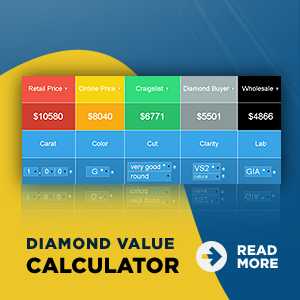
Turquoise hardness is #5 to #6 on Mohs scale, and generally fair to good in toughness. Sources are China, Iran, and the US.
Turquoise is one of the world’s most ancient gems. Archaeological excavations revealed that Egyptian royalty wore turquoise jewelry as early as 5500 BC, and Chinese artisans were carving it more than 3,000 years ago. Turquoise is the national gem of Tibet, and has long been considered a stone that guarantees health, good fortune, and protection from evil.
Turquoise was a ceremonial gem and a medium of exchange for Native American tribes in the southwestern US. They also used it in their jewelry and amulets. The Apaches believed that turquoise attached to a bow or firearm increased a hunter’s or warrior’s accuracy. The gem’s name comes from the French expression pierre tourques or “ Turkish stone” The name, which originated in the 13th century, reflects the fact that the material probably first arrived in Europe from Turkish sources.
Turquoise can be translucent to opaque, with a color that usually ranges from light to medium blue or greenish blue. It’s often mottled, and sometimes has splotches. It might also have veins of matrix running through it. The most valuable turquoise is an even medium blue, with no matrix, and the ability to take a good polish.
Turquoise is plentiful and available in a wide range of sizes. It’s used for beads, cabochons, carvings, inlays. Although well known to consumers, it popularity in the mainstream jewelry industry comes and goes. The biggest and most permanent market is in the American Southwest. It’s also popular elsewhere among people who are captivated by that region’s mystery and romance, as well as by the blue of its skies.

Zircon is #6 to #7.5 hardness on Mohs scale, and fair to good toughness, yet it can be brittle and might be easily abraded. Sources are Australia, Cambodia, China, Myanmar(Burma), Sri Lanka, Thailand, and Vietnam.
Most of us might have heard of Zircon, but never seen it. Mostly, this is because of colorless zircon’s wide use as a diamond simulate in the early 1900’s. It was long ago replaced in that role by more convincing look-alike, but its name still means “imitation” to many people. In the Middle Ages, this gem was thought to induce sound sleep, drive away evil spirits, and promote riches, honor, and wisdom. Many scholars think the stone’s name comes from the Arabic word zarkun, meaning “cinnabar” or “vermilion”. Others believe the source is the Persian word zargun, or “gold colored”. The most common color for the blue zircon on today’s market is a distinctive greenish blue that’s often called “blue zircon”. Others include green, yellow, orange, red, brown, and even purple. The colors are often light and muted, but the finest stones have strong, rich color.
Zircon is one of the few colored stones that might show visible dispersion. The supply of zircon is generally limited, and typical sizes depend on color. Blue or green stones normally range from 1 ct. to 10 ct., yellow and oranges up to 5 ct.. While reds and purples are usually smaller. Most colors are available in various fancy shapes, but colorless and blue stones are often fashioned in the style known as zircon cut—a round brilliant with eight extra facets around the culet. Heat treatments that produces many of its colors makes zircon brittle, for this reason, it’s safe to recommend zircon in earrings or pendants, or in protected ring settings. This will keep the gem from becoming scratched and abraded and make it less vulnerable to fracturing.

Tanzanite is #6 to #7 hardness on Mohs scale, and fair to poor toughness due to cleavage and sensitivity to thermal shock. Source is Tanzania.
Tanzanite is relatively new to the colored stone galaxy. This transparent blue gem first turned up in 1962, scattered on the Earth’s surface in northern Tanzania, a country in eastern Africa. Scientist identified it as a variety of the mineral zoisite. About five years later, a prospector discovered a large deposit of it in the same area, and serious mining began. Tiffany & Co. recognized its potential as an international seller and made a deal to become its main distributor. Tiffany & Co. named the gem after the country it came from, and promoted it with a big publicity campaign in 1968. Almost overnight, tanzanite was popular with leading jewelry designers and other gem professionals, as well as with customers who had an eye for beautiful and unusual gems.
Tanzanite’s public recognition and popularity have grown steadily, but there have been wide fluctuations in the gem’s supply and price level, due mostly to Tanzania’s volatile political, social, and economic conditions. Tanzania remains the gem’s only source, so the outlook for long-term availability is rather doubtful. Tanzanites are routinely heat-treated to produce colors that include light to dark violetish blue and bluish purple, as well as pure blue. Rich, deep hues are valued most, but usually are seen only in stones weighing 5 cts or more. This is mainly because of decisions made during the cutting process. Tanzanite typically shows pleochroism, which means it displays different colors from different directions. It usually looks violetish blue from some directions, purple from others. Predominately blue tanzanite is generally worth more per carat, but because of the way tanzanite crystals grow, a cutter can usually get a bigger stone by orienting the gem to show the purple color. While the trade considers the pure blue stones to be the “top” grade, some people actually prefer the lighter and more purplish colors.
Tanzanite is a special-care gem for two reasons: sensitive to thermal shock, and the potential for cleavage. Sometimes the temperature change between the hot lights of the display case and the chilly glass countertop in an air-conditioned showroom can be enough to develop cleavages in tanzanite. When looking for tanzanite jewelry, earrings and pendants are good choices for everyday wear. Tanzanite shouldn’t be handled carelessly.







